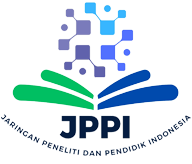The Application of Augmented Reality (AR) in Physics Education: A Case Study on Optics Material
DOI:
https://doi.org/10.52434/jpif.v5i1.42438Keywords:
Augmented Reality, Physics, Interactive Learning, Educational Technology, OpticsAbstract
This study aims to explore the application of Augmented Reality (AR) technology in physics education, focusing on optical materials. In the context of physics education, especially in Central Maluku, AR can serve as a solution to overcome the challenges of understanding abstract concepts such as light refraction, reflection, and light interaction with lenses. The use of AR allows students to view physical phenomena in a more concrete and interactive three-dimensional form, which helps enhance their understanding of optical materials that are difficult to grasp through conventional methods. This research employs a descriptive qualitative approach with semi-structured interviews and an exploratory approach with ten physics teachers in Central Maluku Regency. The findings indicate that although there are challenges such as limited devices and lack of teacher training, the use of AR has a positive impact on student engagement, material understanding, and learning outcomes. This study concludes that AR has great potential in improving the quality of physics education, although further support in terms of infrastructure and training is needed to optimize its implementation in schools.
References
Al Anshori, I., Parno, P., & Hidayat, A. (2024). Analisi Kemampuan Berpikir Kritis Siswa Pada Pembelajaran Optik. Briliant: Jurnal Riset dan Konseptual, 9(3), 602–613.
AlGerafi, M. A. M., Zhou, Y., Oubibi, M., & Wijaya, T. T. (2023). Unlocking the potential: A comprehensive evaluation of augmented reality and virtual reality in education. Electronics, 12(18), 3953.
Almusaed, A., Almssad, A., Yitmen, I., & Homod, R. Z. (2023). Enhancing student engagement: Harnessing “AIED”’s power in hybrid education—A review analysis. Education Sciences, 13(7), 632.
Amarulloh, R. R., & Irvani, A. I. (2025). Metode Penelitian Kuantitatif dalam Pendidikan: Sebuah Panduan Praktis. PT. Sigufi Artha Nusantara.
Arena, F., Collotta, M., Pau, G., & Termine, F. (2022). An overview of augmented reality. Computers, 11(2), 28.
BoangManalu, E. N., Iqbal, M., & Garcia, C. (2024). ANALYSIS OF THE RELATIONSHIP BETWEEN INTEREST AND LEARNING OUTCOMES OF PHYSICS IN SENIOR HIGH SCHOOL. EduFisika: Jurnal Pendidikan Fisika, 9(1), 46–53.
Cai, S. (2017). Applications of augmented reality-based natural interactive learning in magnetic field instruction. Interactive Learning Environments, 25(6), 778–791. https://doi.org/10.1080/10494820.2016.1181094
Creswell, J. W. (2020). Educational Research: Planning, Conducting, and Evaluating Quantitative and Qualitative Research. Pearson. https://www.pearson.com/en-us/subject-catalog/p/educational-research-planning-conducting-and-evaluating-quantitative-and-qualitative-research/P200000000920/9780136874416
Dargan, S., Bansal, S., Kumar, M., Mittal, A., & Kumar, K. (2023). Augmented reality: A comprehensive review. Archives of Computational Methods in Engineering, 30(2), 1057–1080.
Handayani, S., Utami, L. S., Islahudin, I., Isnaini, M., Zulkarnain, Z., & Sabaryati, J. (2024). Meningkatkan Minat Belajar dan Pemahaman Siswa Terhadap Materi Fisika melalui Pembelajaran Interaktif Berbasis Scratch. Seminar Nasional Paedagoria, 4(1), 210–223.
Harefa, D. (2023). THE RELATIONSHIP BETWEEN STUDENTS’INTEREST IN LEARNING AND MATHEMATICS LEARNING OUTCOMES. Afore: Jurnal Pendidikan Matematika, 2(2), 1–11.
Ilomuanya, M. D., Ikusika, A., & Aramide, J. O. (2024). Effect of practical teaching approach on physics students’ achievement in the concept of reflection and refraction of light. International Journal of Physics and Chemistry Education, 16(1), 9–20.
Irvani, A. I. (2019). Korelasi Minat Terhadap Fisika dengan Hasil Belajar Siswa SMA pada Domain Pengetahuan Faktual dan Konseptual. Jurnal Pendidikan UNIGA, 13(1), 115–120. https://doi.org/10.52434/JP.V13I1.821
Irvani, A. I., Adawiyyah, Y., Sadidah, A., Agustini, R. P., & Putriani, V. (2022). Modul Ajar Optik Geometri. Semesta Aksara.
Kotin, L. M., Ohoirat, M. B. M., & Bulurdity, F. (2023). GEREKAN PELAYANAN KASIH DI DESA YALATAN KABUPATEN MALUKU TENGAH. Jurnal Pengabdian Kole-kole, 2(1).
Lampropoulos, G., Keramopoulos, E., Diamantaras, K., & Evangelidis, G. (2022). Augmented reality and gamification in education: A systematic literature review of research, applications, and empirical studies. Applied sciences, 12(13), 6809.
Lavric, A., Beguni, C., Zadobrischi, E., Căilean, A.-M., & Avătămăniței, S.-A. (2024). A comprehensive survey on emerging assistive technologies for visually impaired persons: lighting the path with visible light communications and artificial intelligence innovations. Sensors, 24(15), 4834.
Maruapey, M. W., & Hamizar, A. (2024). Strategi Pengembangan Kualitas Sumber Daya Manusia Berbasis Analisis SWOT di Desa Tengah-Tengah Kabupaten Maluku Tengah. Jurnal Penelitian Inovatif, 4(2), 765–774.
Nggolaon, D., Silahooy, S., & Jaya, G. W. (2024). Edukasi Peralatan Pengukuran dengan Metode Praktikum di Sma Negeri 27 Maluku Tengah. PaKMas: Jurnal Pengabdian Kepada Masyarakat, 4(2), 331–337.
Paling, S., Makmur, A., Albar, M., Susetyo, A. M., Putra, Y. W. S., Rajiman, W., Djamilah, S., Suhendi, H. Y., & Irvani, A. I. (2024). Media Pembelajaran Digital. TOHAR MEDIA.
Septianti, R. P., Pelani, R. R., Pakosmawati, R., & Irvani, A. I. (2023). ANALISIS ATTENTION RELEVANCE CONFIDENCE SATISFACTION (ARCS) FISIKA SISWA SMA. INPAFI (Inovasi Pembelajaran Fisika), 11(01). https://doi.org/10.24114/INPAFI.V11I01.44246
Sharma, A., Mehtab, R., Mohan, S., & Mohd Shah, M. K. (2022). Augmented reality–an important aspect of Industry 4.0. Industrial Robot: the international journal of robotics research and application, 49(3), 428–441.
Sulastri, H. P., Irvani, A. I., & Warliani, R. (2024). PENGEMBANGAN MODUL DIGITAL FISIKA BERBASIS PROJECT BASED LEARNING (PjBL) DALAM MENINGKATKAN MINAT BELAJAR PESERTA DIDIK. OPTIKA: Jurnal Pendidikan Fisika, 8(1), 97–111. https://doi.org/10.37478/optika.v8i1.3696
Syafila, A. E., & A’yun, D. Q. (2024). Analisis eksplorasi konsep pendidikan konstruktivis dalam pembelajaran berbasis proyek. Jurnal Media Akademik (JMA), 2(12).
Syahdah, V. S., & Irvani, A. I. (2023). Kesulitan Menanamkan Jiwa Percaya Diri terhadap Kemampuan Mengerjakan Soal Fisika. Jurnal Pendidikan dan Ilmu Fisika, 3(1), 163–171. https://doi.org/10.52434/jpif.v3i1.1586
Tsaramirsis, G., Kantaros, A., Al-Darraji, I., Piromalis, D., Apostolopoulos, C., Pavlopoulou, A., Alrammal, M., Ismail, Z., Buhari, S. M., & Stojmenovic, M. (2022). A modern approach towards an industry 4.0 model: From driving technologies to management. Journal of Sensors, 2022(1), 5023011.
Vidak, A., Šapić, I. M., Mešić, V., & Gomzi, V. (2024). Augmented reality technology in teaching about physics: a systematic review of opportunities and challenges. European journal of physics, 45(2), 23002.
Downloads
Published
Issue
Section
License
Copyright (c) 2025 Aditya Putra Basir, Risnawati Uding

This work is licensed under a Creative Commons Attribution 4.0 International License.

























